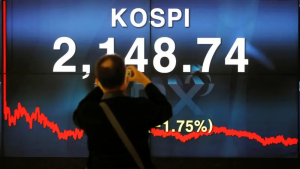As the week’s trading approaches its conclusion, the U.S. Dollar Index has seen a notable rise supported by several economic and political factors, amidst a cautious atmosphere prevailing in global markets due to conflicting statements between the U.S. and China regarding reciprocal tariffs. The following report highlights the key influences on the movement of the dollar.
Consumer Confidence Data Fuels U.S. Dollar Momentum: Data released by the University of Michigan showed a surprising increase in the Consumer Confidence Index in April, reaching 52.2 points, exceeding expectations of 50.6 points, and higher than the March reading of 50.8 points. These positive results contributed to boosting investors’ confidence in the performance of the U.S. economy, which directly reflected on the strength of the dollar against major currencies.
At the same time, the final reading of inflation expectations from the University of Michigan reported a significant jump to 6.5% in April, compared to 5.0% in March. This increase has reinforced expectations that the Federal Reserve may maintain a tight monetary policy for a longer period, giving the dollar a strong boost in the short term.
New Hopes for a Trade Agreement Enhance Dollar Support Another factor that contributed to supporting the U.S. dollar was the renewed hopes regarding an anticipated trade deal between the U.S. and China, following statements from President Donald Trump, who confirmed receiving a direct call from his Chinese counterpart Xi Jinping. Trump stated that the ongoing discussions with Chinese officials are positive and heading towards a new trade agreement, which provided the markets with a boost of optimism regarding global trade stability, positively impacting the dollar.
Bond Yields Decline and Pressure Dollar Gains Despite strong support from economic data, the dollar faced some pressures due to a decline in U.S. Treasury yields across various maturities. The yield on 10-year bonds dropped to 4.278%, the yield on 20-year bonds fell to 4.759%, and the yield on 30-year bonds decreased to 4.736%. This decline in yields somewhat limited the dollar's gains and kept the markets on alert.
Dollar Rises Despite Pressures.. Markets Await Jobs Report Amid these developments, the U.S. Dollar Index rose by 0.34% to reach 99.63 points. This increase comes at a time when markets are awaiting the release of the anticipated U.S. jobs report at the end of next week, which is expected to have a significant impact on the monetary policy outlook in the coming period.











